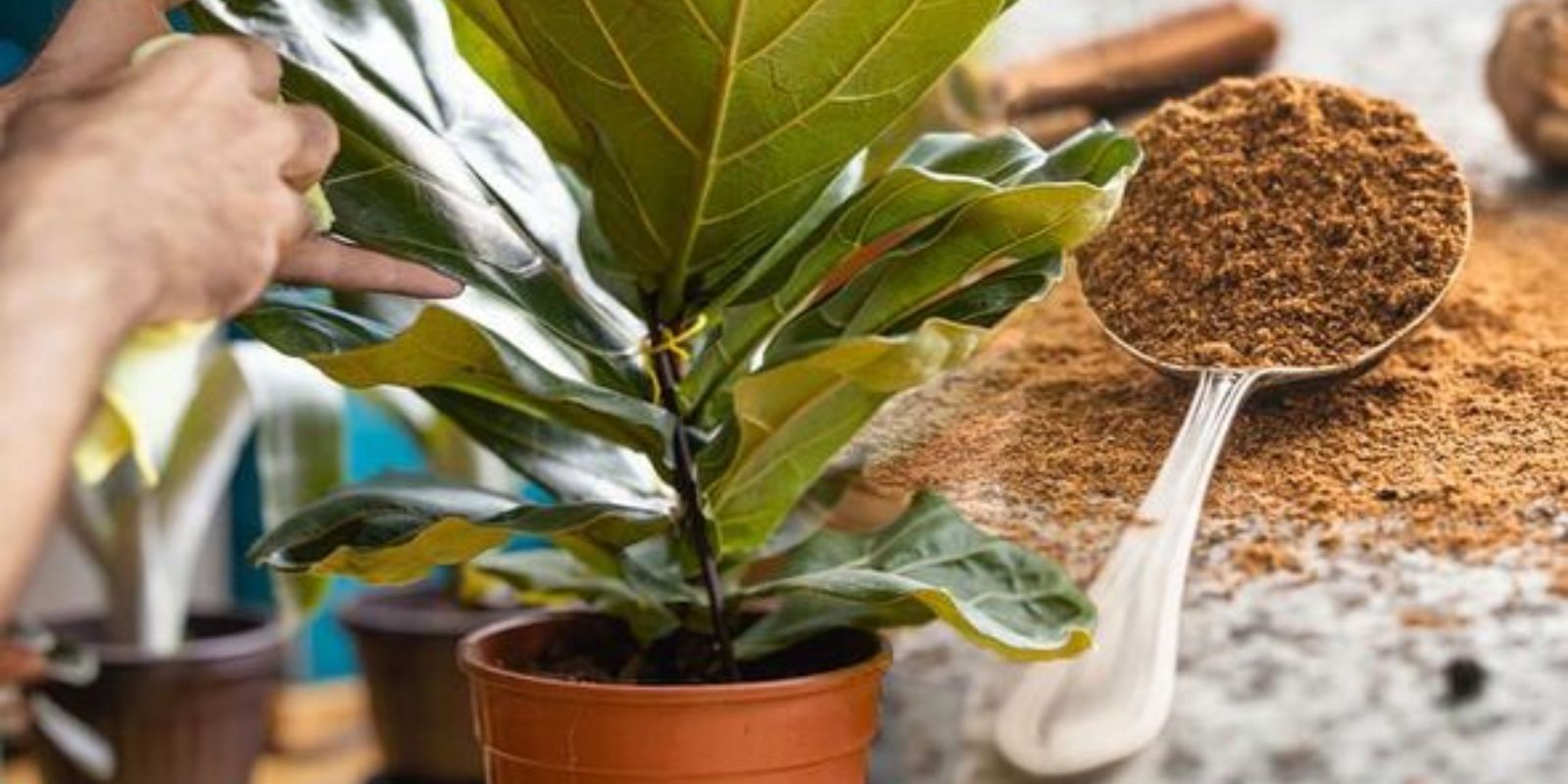Cinnamon, often associated with sweet and savory dishes, is more than just a kitchen staple. This common spice also boasts remarkable properties that can benefit your garden. From preventing fungal infections to enhancing soil health, cinnamon offers an array of natural solutions for keeping your plants healthy and thriving. In this article, we’ll explore how to use cinnamon to protect your plants from disease and boost their overall well-being.
1. Understanding Cinnamon’s Benefits for Plants
A. Natural Antifungal Properties
Cinnamon contains cinnamaldehyde, a compound known for its antifungal properties. This makes it an effective tool in preventing and treating fungal infections in plants. By creating an inhospitable environment for fungi, cinnamon helps protect your plants from diseases like powdery mildew, root rot, and damping-off.
B. Soil Health Enhancement
In addition to its antifungal effects, cinnamon can improve soil health. It acts as a natural soil sterilizer, reducing the risk of soil-borne pathogens. By enhancing soil conditions, cinnamon promotes healthier root systems and overall plant growth.
2. How to Use Cinnamon to Protect Your Plants
A. Using Ground Cinnamon
- Preparation:
- Choose High-Quality Cinnamon: Opt for pure ground cinnamon, free of additives or sugars.
- Prepare Tools: Have a small container or shaker ready for easy application.
- Application:
- Sprinkling on Soil: Lightly sprinkle ground cinnamon around the base of your plants. This helps create a protective layer that deters fungal spores and pathogens.
- Incorporating into Soil: Gently mix cinnamon into the top layer of the soil. This method improves soil health and helps control disease from the root zone.
- Frequency:
- Regular Applications: Apply ground cinnamon every 2-3 weeks, or as needed, to maintain its protective effects.
B. Creating and Using Cinnamon Solutions
- Preparation:
- Mix Ingredients: Combine 1 teaspoon of ground cinnamon with 2 cups of water. Stir well to dissolve the cinnamon.
- Strain Solution: Use a fine mesh strainer or cheesecloth to remove any undissolved cinnamon particles.
- Application:
- Spraying Leaves: Pour the strained cinnamon solution into a spray bottle. Mist the leaves of your plants, focusing on areas prone to fungal infections.
- Soil Application: You can also use the solution to water the soil, enhancing its antifungal properties.
- Frequency:
- Routine Treatments: Apply the cinnamon solution every 1-2 weeks or after heavy rainfall to maintain its effectiveness.
3. Best Practices for Using Cinnamon in Your Garden
A. Monitor Plant Health
- Check for Improvements:
- Observe Plants: Regularly inspect your plants for signs of disease or improvement in their condition after applying cinnamon.
- Adjust Application: Modify the frequency and amount of cinnamon based on your observations and plant needs.
- Combine with Other Methods:
- Integrated Pest Management: Use cinnamon as part of a broader pest management strategy. Combine with other natural remedies and good gardening practices for optimal results.
B. Avoid Overuse
- Moderation is Key:
- Prevent Overapplication: While cinnamon is beneficial, excessive use can impact soil health. Stick to recommended amounts and application frequencies.
- Soil Balance: Ensure that cinnamon application does not disrupt the natural balance of your soil or interfere with beneficial microorganisms.
- Safe Storage:
- Keep Dry: Store cinnamon in a cool, dry place to maintain its efficacy. Avoid exposure to moisture, which can affect its quality.
4. Additional Tips for Maximizing Cinnamon’s Benefits
A. Preventing Common Plant Diseases
- Powdery Mildew:
- Application: Sprinkle ground cinnamon on affected areas and spray with cinnamon solution. This helps inhibit fungal growth and reduces symptoms.
- Root Rot:
- Soil Treatment: Incorporate cinnamon into the soil before planting to prevent root rot. It creates a healthier environment for roots to thrive.
B. Enhancing Overall Plant Health
- Soil Enrichment:
- Combine with Compost: Mix cinnamon with compost or organic matter to boost soil health and promote vigorous plant growth.
- Pest Control:
- Repelling Pests: Cinnamon can also help deter certain pests, such as ants and aphids, when sprinkled around the garden.
5. Benefits and Limitations of Using Cinnamon in Gardening
A. Advantages
- Natural and Safe:
- Non-Toxic: Cinnamon is a safe alternative to chemical pesticides and fungicides. It poses minimal risk to humans, pets, and beneficial insects.
- Affordable Solution:
- Cost-Effective: Cinnamon is an inexpensive option for garden care, making it accessible for all gardeners.
B. Limitations
- Not a Cure-All:
- Disease Range: While effective for some fungal diseases, cinnamon may not address all types of plant issues. Use it as part of a comprehensive gardening approach.
- Soil Impact:
- Soil Health: Excessive use of cinnamon can potentially affect soil microorganisms. Balance its application with other soil management practices.
Conclusion
Incorporating cinnamon into your gardening routine is a simple and effective way to protect your plants from disease and enhance soil health. By using ground cinnamon and cinnamon solutions, you can create a healthier, more resilient garden. Remember to monitor your plants’ condition, adjust applications as needed, and combine cinnamon with other gardening practices for the best results.
Motivation:
Unlock the power of cinnamon for a thriving, disease-free garden! Share your experiences and inspire others to try this natural gardening remedy.
Hashtags:

